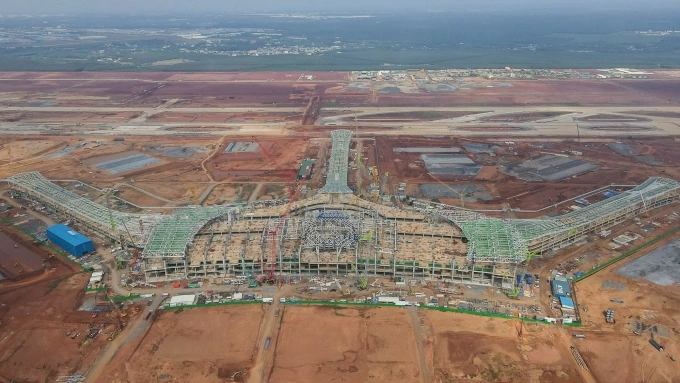According to OAG, a U.K.-based organization specializing in travel and aviation data analysis, others projected to join the list and have a capacity of 100 million passengers are Singapore’s Changi Airport with the construction of Terminal 5, Hong Kong International Airport, Thailand’s Suvarnabhumi Airport, South Korea’s Incheon International Airport, and a new airport in the Philippines.
The first phase of Long Thanh, in the southern province of Dong Nai and 40 kilometers from HCMC, is nearing completion, scheduled for next year.
 |
|
Construction of Long Thanh International Airport in Dong Nai Province, southern Vietnam. Photo by VnExpress/Phuoc Tuan |
The VND336 trillion (US$13.38 billion) airport will initially have a capacity of 25 million passengers and 1.2 million tons of cargo annually.
Phase 2, expected by 2035, will add a second runway and terminal, increasing the capacity to 50 million and 1.5 million tons.
Phase 3 will see it reach the full designed capacity of 100 million passengers and five million tons of cargo by 2050.
To put it in perspective, the country’s main airports now, Hanoi’s Noi Bai and HCMC’s Tan Son Nhat, can handle 30 million and 25 million passengers.
OAG said Asian governments view these aviation hubs as critical to attracting domestic and foreign investments, stimulating tourism and creating jobs.
“Asia is not only building more airports, but also developing larger, smarter and better-connected ones.”
This transformation is fueled by rapid economic growth, an expanding middle class and accelerating urbanization across the region.
The report further highlights that modern mega airports like Long Thanh are adopting advanced technologies such as biometrics, artificial intelligence, automation, and sustainable solutions.
These aim to support scalable growth while maintaining high standards of passenger experience and operational efficiency.





